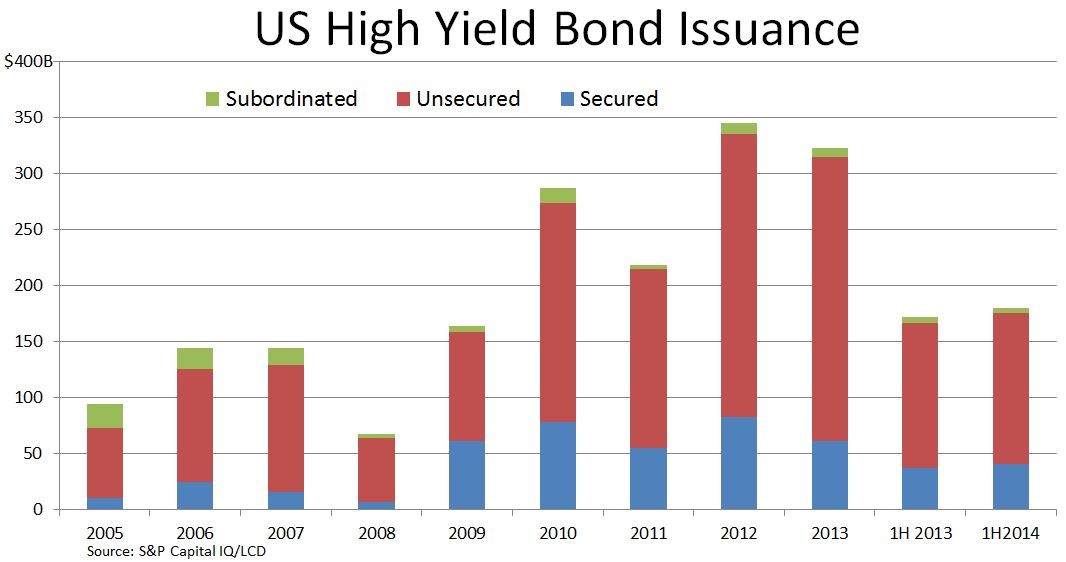3 Ways to Find High Yield in Bond Funds
Post on: 9 Апрель, 2015 No Comment

Munis, corporates and non-agency MBS funds offer good income
3 Ways to Find High Yield in Bond Funds
With the 10-year Treasury note paying a paltry 1.4%, investors are looking for other avenues to gain higher yields. There are two primary ways to increase your yields in the bond market:
- Take more interest rate risk
- Take more credit risk
Taking more interest rate risk means buying bonds with longer maturities. A 30-year Treasury bond pays 2.6%, or about 1.1% more than the 10-year Treasury. However, if interest rates were to move just 1% higher, the value of the 30-year bond would fall by around 20%, versus only 8% for the 10-year.
Strong Dollar Is Slicing Corporate Sales
The risk/reward ratio for taking lots of interest rate risk does not appear attractive. (You can learn more about how to manage interest rate risk in our article “ Bond Duration. ”)
Higher Risk = Higher Bond Yield
Credit risk is more interesting. Bonds with more credit risk have a higher risk that the borrower will not be able to pay interest or principal. Treasuries represent the lowest credit risk because theyre backed by the “full faith and credit” of the U.S. government.
On the higher end of the spectrum, are high-yield municipal bonds, non-agency mortgage-backed securities, and high-yield corporate bonds. You can earn a yield of 5%, 6%, 7% or even 8% by investing in these type of bonds.
But youre also more likely to face defaults of individual bond issues. Right now, the default rate on high-yield corporate bonds is running around 2% per year, but historically the average is around 4%.
Because the risk of default is so high, we recommend that you hold these bonds through bond funds rather than individual bond issues. That way an individual default wont have a major impact on your portfolio.
The Math of High-Credit-Risk Investing
Let’s say you buy a junk bond with a 7% yield, which is about 6% more than a Treasury of the same maturity. As long as defaults don’t reduce returns by 6%, youll end up ahead vs. if you had bought Treasuries. Usually, a default or even bankruptcy doesnt mean that the bond investor gets nothing.
Typically, a bond investor will end up with about 60% of the bond’s face value when a bond defaults. (For more on this see our article “ What Happens When a Bond Defaults? ”)
Let’s look at an example of the return for a high-yield corporate bond fund under the following scenario, using a simple equation where Junk Bond Yield (Default Rate x Recovery Rate) = Return
Default Rate: 4%
Recovery Rate: 60%
7% (4% x 0.60) = a 4.8% Return
Under this scenario, thats 3.8 percentage points higher than Treasuries.
In the example, the default rate was assumed to be 4% instead of the current rate of 2%. The return would be higher if the rate continues at 2%. However, during the financial meltdown in 2009, the default rate exceeded 10% on high-yield bonds. One of the reasons that high-yield bonds pay so much more than Treasuries is the risk of negative returns when default rates spike. However, during stable times, high-credit-risk bonds are a very rewarding investment.
Also, not included in the example above are the price movements of the bonds owned by the fund. Generally speaking, high-credit-risk bonds are more reactive to changes in economic conditions and less reactive to interest rate changes than most bonds, including Treasuries and investment-grade corporate bonds. An improving economy will lead to higher prices, and a worsening economy will hurt prices. (For more on this see our article on “ Why High Yield Bonds Act More Like Stocks Than Bonds .”)
Ideas for High-Yield Funds
Non-Agency Mortgage-Backed Securities: As the name implies, mortgage-backed securities (MBS) invest in home mortgages. Most MBS have minimal credit risk because theyre backed by a government agency or quasi-government agency. However, a small portion of the market called “non-agency MBS” do not have an implicit or explicit guarantee. If you believe the worst is over for the housing market, you might consider these funds.
The following ones have at least 25% of their funds invested in non-agency MBS. (You can learn more about Non-Agency Mortgage-Backed Securities here .)














